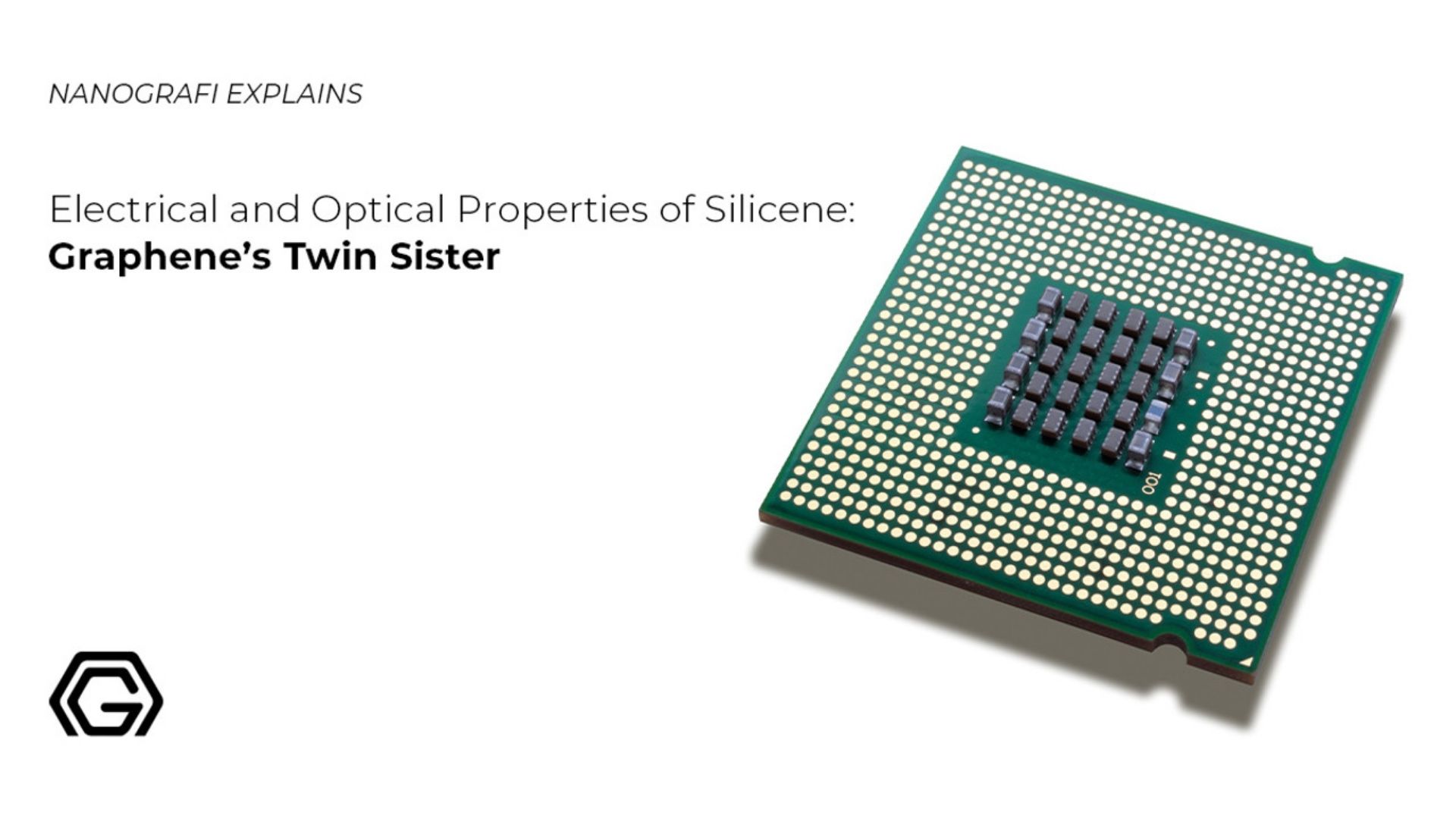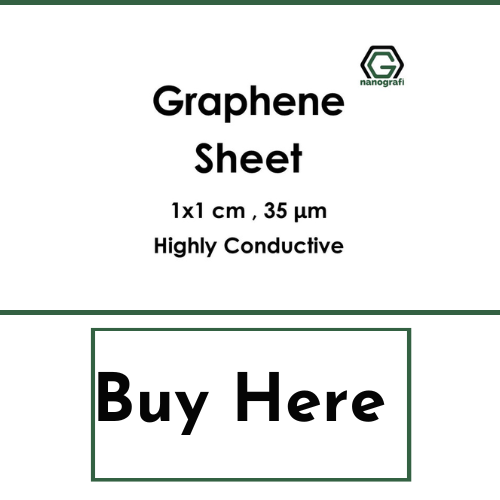Use of Graphene Sheets in Nanoelectromechanical Systems (NEMS)
Graphene is a very useful and innovative search for science because it benefits the lives of people to great levels.
It is an allotrope of carbon and is present in its raw form but later transformed into an excessively useful element. It has outstanding properties and due to all those properties, it is considered one of the most useful elements in human life. Along with many other uses. Graphene is remarkably used in nanoelectromechanical (NEMS) applications. It is all due to the diversity that it has stored in itself.
Introduction
Graphene makes the NEMS authentic, diverse, reliable, and resourceful by incorporating all its properties in them. Carbon atoms arranged in 2-dimensions, bonded in a hexagonal pattern are known as graphene.
An Overview of Graphene
Graphene can innovate the material and technology that's currently being used for making an effect on the people's way of living with the help of graphene's remarkable characteristics, for instance, highly conductive, incredibly strong, transparent, light, flexible, making it perfectly suitable for different applications. Through the usage of high operating bandwidth’s capacity, graphene due to being flexible and transparent can be used in photodetectors and in flexible electronics.
In the nano-electro-mechanical system (NEMS), graphene is beneficial as it is a remarkable material with remarkable characteristics, that are very suitable for nano-electro-mechanical systems (NEMS), for instance, switches and sensors including force sensors, mass, and strain gauges. Graphite’s single atom thick layer is Graphene and it consists of carbon atoms that are bonded together, it is in a hexagonal honeycomb lattice. On the copper (Cu) foil, graphene is grown using a chemical vapor deposition (CVD) method and it is used for transference on a silicon wafer with etched holes on top. Through the Polymethyl methacrylate (PMMA) method, graphene is transferred on the silicon, and through the usage of atomic force microscopy (AFM) and scanning electron microscopy (SEM), the analysis is done. The suspended graphene is quite uniform, although, for the development of the fabrication and transference process, a huge amount of effort is needed.
Before 2004 when the monolayer graphene was isolated, the belief was that because of thermal instability, 2-dimensional compounds, when separated, could not exist. Although, when isolation of graphene occurred, it was actually possible, giving scientists a chance to figure out exactly how. Through transmission electron microscopy, the suspended sheets of graphene were seen, researchers believe that the reason is the modification of the material’s structure because of the slight rippling in the graphene. Although, further the research suggested that the main reason is the graphene's carbon to carbon bonds, which are so strong and small that the thermal fluctuation is prevented from destabilizing it.
Properties of Graphene
Excellent chemical, mechanical, thermal, and physical characteristics are possessed by graphene, making it a capable material for NEMS applications. With 15000 cm2V -1 s -1 or more electron mobility, graphene has good electrical conductivity and high thermal conductivity (more than 3000 Wm-1K -1). 97.7 % transmittance is possessed by the graphene monolayer. Being a transparent electronic component, the monolayer graphene’s optical characteristics are its remarkable light absorption levels, πα ≈2.3%, α being the fine structure constant.
Use of Graphene Sheets in NEMS Applications
MEMS-based Nanoelectromechanical systems (NEMS) is a promising field of technology, and a critical feature of NEMS devices is having at least 1-dimension lesser than 100 nm. On one hand, the continuous miniaturization of devices is required by Moore's law, a simple scaling law describing technology improvements results in a doubling of the number of transistors on-a-chip roughly every two years. On the other hand, as device dimensions decrease, NEMS shows new physical properties, for instance, improvements in force, increases in resonance frequency, low-temperature behavior, and mass and displacement sensitivity, all that reflect quantum limit, which may dominate the operation of the devices.
The ultimate limit would be one atom thick, but reducing most materials to such small dimensions generally affects mechanical stability and stiffness. New fabrication approaches are needed to realize the NEMS structures. NEMS can be operated by two methods: the bottom-up and the top-down. In the top-down approach, bulk materials like silicon make structure and devices, with the help of the same many methods that are used in MEMS, although, in size, they are smaller because of the employment of more advanced etching and photolithography methods. In the bottom-up method, deposition, growing, or self-assembly technologies, employing nanostructures such as nanowires and nanotubes, etc. as building blocks, are involved.
The future trend of MEMS/NEMS technology involves complex levels of integration with the ultimate target of all components being onto a single substrate. Microelectronics are not the only one to merge MEMS/NEMS, it can also be done with other technologies, for instance, at the molecular or atomic level, a nanotechnology that manipulates matter for making something beneficial at the nanoscale, etc., which is sometimes called “heterogeneous integration”
Graphene is a promising material for use in NEMS applications due to its extremely high carrier mobility, high mechanical strength, and low density. Graphene, an atomically thin 2D material, is the thinnest known material (with a monolayer thickness of ~ 0.335 nm) and yet it is extremely strong and stiff and has ultrahigh charge carrier mobility. Graphene’s ultrathin structure and unique electrical and mechanical characteristics make graphene a very capable transducer and structural material for beams and membranes in MEMS/NEMS applications with potential for substantial device scaling while providing improved performance of devices.
If you are interested in the properties of Silicene,
you can read our blog post here.
Its excellent electrical conductivity enables integrated electrical transduction and its planar geometry allows itself easily to be compatible with standard lithographic processing. An obvious advantage is that although graphene is intrinsically nanoscale, it can be patterned using standard lithographic processes at the wafer scale. Studies on graphene membranes for NEMS began in 2007 featured with electromechanical resonators that are made from single-layer graphene sheets by the research group of Cornell University. The membranes of graphene suspending over trenches in the graphene resonators’ underlying substrate display the mechanical resonators that are the thinnest, ever produced. At frequencies in the range of Megahertz, the devices can operate both electronically or optically.
Following the above initial breakthroughs, the Columbia University research group extended the scope of graphene resonators that can be used for sensing mass and temperature. In 2013 the graphene-based pressure sensors with high sensitivity and small footprint are developed. At present, atomically thin suspended graphene membranes and beams have been used in many exciting applications due to the ultra-small footprint and high performance of graphene NEMS devices, such as electromechanical resonators, piezoresistive pressure sensors, high responsivity photodetectors, nanoelectromechanical switches, etc. Taking advantage of ultra-low weight, the electromechanical transduction property and strong adhesion with SiO2 substrate, atomically thin suspended graphene membranes have great potential for high-performance NEMS applications with dramatically reduced size and improved performance, such as miniaturized accelerometers, microphones.
Such advanced electromechanical transducers including accelerometers, gyroscopes normally require suspended beams with integrated transduction mechanisms and attached proof masses. These types of NEMS transducers have a broad range of emerging applications for which it is of critical importance that the transducer devices are aggressively miniaturized due to the application requirements, going beyond the obvious advantage of reduced cost.
Applications calling for ultraminiature devices include for example wearable electronics for activity level monitoring, patient recovery monitoring, implantable systems for heart failure monitoring, and various transducers for the Internet of Things (IoT). However, downscaling of electromechanical transducers such as accelerometers comprises that the die area occupied by the proof mass and the electromechanical transduction mechanism is substantially reduced, thereby dramatically reducing device sensitivity. These limitations can be overcome by realizing atomically thin suspended graphene beams with attached proof masses as an enabling fundamental component for advanced NEMS devices with ultra miniaturized dimensions and improved sensitivities. In addition, such structures will also be crucial for characterizing material properties and the transduction mechanism of suspended graphene.
Device Dimensions and Qualities
Different trench widths and dimensions of the Si masses were fabricated, with a minimum trench dimension of 1 µm × 7 µm per trench and maximum dimensions of 5 µm × 110 µm as well as minimum mass dimensions of 5 µm × 5 µm and maximum mass dimensions of 100 µm × 100 µm. The trench depth is 16.4 µm including 15 µm for the Si device layer and a SiO2 layer of 1.4 µm thickness. The weight of our Si mass is 3 orders more than the mass of SU-8, 6 orders more than the mass of gold, and 7 orders more than the mass of carbon. The depth and side length of the space formed due to backside etching in the SOI substrate’s handle layer is 150 µm × 150 µm, 400 µm. The Raman spectrum of one fabricated graphene device shows graphene’s usual characteristic peaks: occurrence of the “G-peak” at roughly 1600 cm-1 and the at roughly 2700 cm-1, the occurrence of “2D-peak”, demonstrating graphene’s presence.
Device Yields
The yields versus suspended graphene membrane’s coverage area over trenches are estimated. Here, the coverage area was defined as the suspended graphene membrane’s area on trenches in each of the structures. In total, about 75% of structures have >90% of coverage of the trench areas with graphene membranes.
Cleanness of Graphene Surface
PMMA was used as graphene’s support layer during graphene transfer. After an exhaustive rinse in acetone, there are PMMA residues sticking to the graphene because of the strong dipole interactions between the PMMA and the chemical groups on the graphene. Thermal annealing helps to further decompose the PMMA residues and results in a cleaner graphene surface.
Different Fabrication Process Flows
Experimentally, different methods of fabricating graphene membrane’s structures with attached masses of silicon have been tested, indicating that it was difficult to control the wet HF etching process and it caused graphene displacement, collapse, or wrinkle because of SiO2 layer’s etching below the graphene. Moreover, the releasing masses’ process arose in the liquid environment (acetone, liquid HF, and isopropanol (IPA), etc.), increasing the probability of masses which are being detached from the suspended graphene membranes because of capillary force.
Different Layers of Graphene
Transferring single-layer graphene over the trenches based on wet and dry transfer was also tried. When using single-layer graphene, our fabrication yield was on the order of 1%. The devices that resulted were very sensitive and their manual handing wasn’t easy. However, in comparison with single-layer graphene, double-layer graphene can enhance the yields substantially. Scientists assume that multi-layer graphene or tri-layer graphene would further enhance the yields than the double-layer graphene.
Conclusion
Graphene is indeed a very useful element and it is used in several areas of life, all because it is benefitting human life to a great extent. Graphene sheets are being used in NEMS applications to a great extent too because graphene provides sustainability and flexibility to the products it is used for and in. The remarkable properties of graphene make it one of a kind.
To get more information, you can visit Blografi.
References
https://cutt.ly/fBtEoOk
https://cutt.ly/LBtEa4A
https://cutt.ly/jVG7sFQ
Recent Posts
-
Nanocomposites in Food Packaging
The utilization of nanocomposites in food packaging represents a significant advancement in the fiel …19th Apr 2024 -
What is the Difference Between 7075 and 6061 Aluminum Alloy?
When comparing 7075 aluminum alloy to 6061 aluminum alloy, it's essential to understand their disti …5th Apr 2024 -
Iron-Air Batteries: The Ultimate Guide
Iron-air batteries represent a significant breakthrough in energy storage technology, offering a sus …29th Mar 2024







